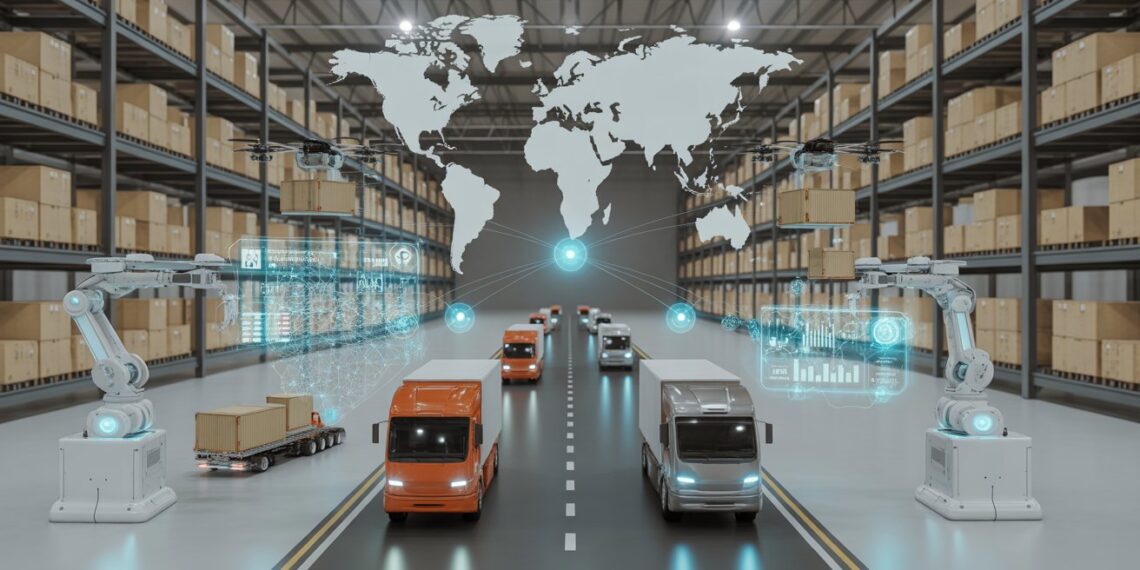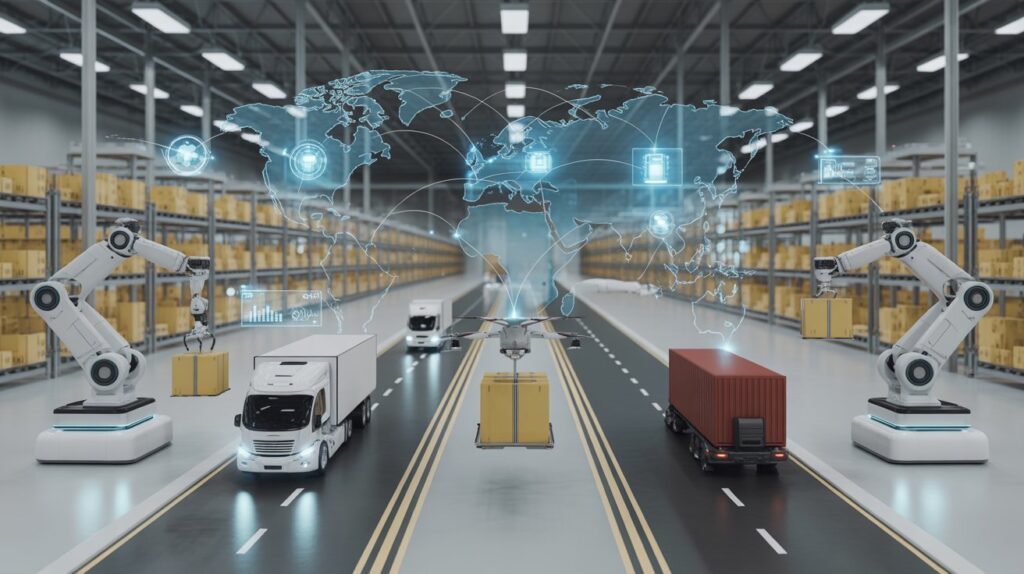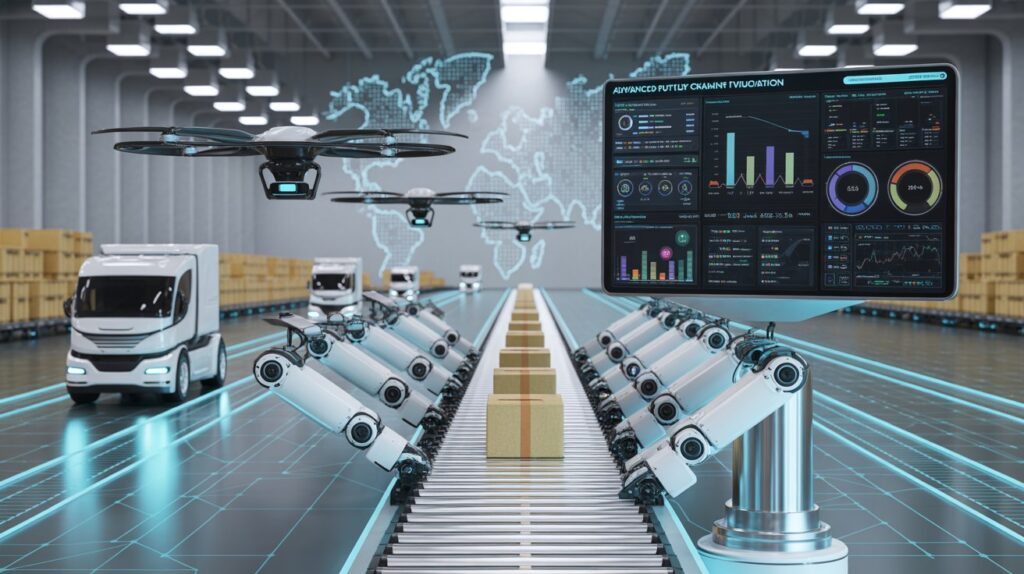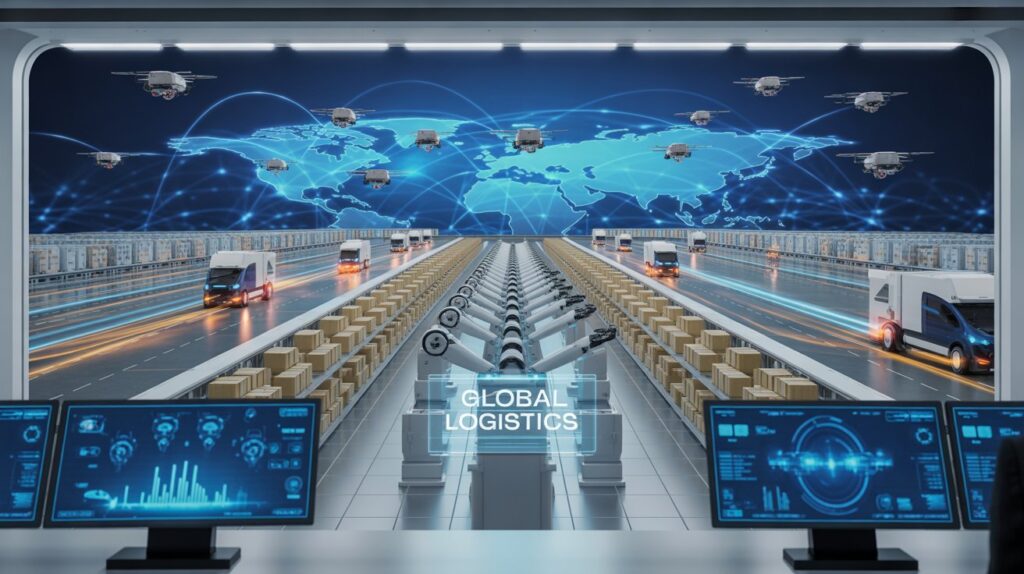Global supply chains are more complex, fragile, and interconnected than ever before. In recent years, companies have faced unprecedented challenges: the COVID-19 pandemic disrupted manufacturing and transportation networks, geopolitical conflicts triggered trade restrictions, labor shortages created operational gaps, and the exponential rise of e-commerce increased demand for faster and more transparent fulfillment. These challenges exposed weaknesses in traditional, human-reliant supply chain models and accelerated the adoption of digital transformation strategies. At the heart of this shift lies automation, a powerful enabler that is driving the supply chain of the future.
In this comprehensive guide, we take a deep dive into how automation is reshaping supply chains. We will examine its definition, domains, technologies, benefits, challenges, real-world applications, and future trends. We’ll also explore best practices for companies ready to embark on this journey and provide answers to some of the most common questions surrounding automation. By the end, you will understand not just what automation does, but how it empowers businesses to thrive in uncertain environments.
What Is Supply Chain Automation?
Supply chain automation is the use of advanced technologies—such as robotics, artificial intelligence (AI), machine learning (ML), robotic process automation (RPA), and the Internet of Things (IoT)—to optimize, streamline, and in many cases fully automate processes across the supply chain. Its aim is to minimize human dependency, eliminate manual errors, improve accuracy, and accelerate performance.
The Core Principle
At its core, automation is about enabling machines and intelligent systems to handle repetitive, data-intensive, or labor-intensive tasks. By doing so, human talent is freed to focus on higher-value activities such as strategy, innovation, and problem-solving.
Scope of Automation in the Supply Chain
Supply chain automation covers:
- Procurement – digital sourcing, supplier onboarding, and automated contract management.
- Planning and Forecasting – AI-driven models predicting customer demand.
- Inventory Management – real-time tracking using IoT sensors and RFID technology.
- Warehousing and Distribution – robotics for picking, packing, and restocking.
- Transportation – route optimization, autonomous vehicles, and drones.
- Documentation – RPA managing invoices, customs papers, and compliance checks.
Automation is no longer optional; it is foundational to supply chains that aim to remain competitive in today’s volatile landscape.
Why Automation Matters More Than Ever
The adoption of automation is not just about cost reduction. It has become a strategic necessity for survival and growth. Several forces are driving this rapid shift:
1. Labor Shortages
Global labor shortages, particularly in warehousing and logistics, have left critical positions unfilled. Automation helps bridge this gap.
2. Rising Consumer Expectations
Consumers expect same-day or next-day deliveries, transparent order tracking, and seamless returns. Meeting these expectations without automation is increasingly impossible.
3. Market Volatility
From trade wars to pandemics, supply chains face constant shocks. Automation enables real-time adaptation to disruptions.
4. Sustainability Demands
With climate change and regulatory pressures, businesses must reduce waste, emissions, and inefficiency. Automation supports greener operations.
5. Technological Accessibility
Cloud platforms, robotics, and AI tools have become more affordable and scalable, making automation accessible to companies of all sizes.
Domains of Automation in Supply Chains
Let’s break down the major areas where automation is reshaping operations:
Procurement and Supplier Management
- AI systems analyze supplier performance and risks.
- Automated platforms streamline vendor onboarding and contract execution.
- Blockchain enables secure and transparent smart contracts.
Planning and Forecasting
- Machine learning enhances forecast accuracy.
- Scenario modeling helps companies plan for disruptions.
- Predictive analytics reduces both overstocking and understocking.
Warehousing and Inventory Management
- Robots perform repetitive tasks with precision.
- Automated storage and retrieval systems (AS/RS) maximize space usage.
- IoT devices provide instant visibility into stock levels.
Transportation and Logistics
- Dynamic route optimization software cuts fuel costs and delivery times.
- Autonomous trucks and drones are piloted for long-haul and last-mile delivery.
- Digital freight platforms improve carrier–shipper collaboration.
Back-Office Operations
- RPA reduces paperwork bottlenecks by automating invoicing and compliance.
- AI chatbots manage customer inquiries and order updates.
- Automated customs documentation ensures faster cross-border movement.
Benefits of Supply Chain Automation
The impact of automation is profound, reshaping efficiency, resilience, and sustainability.
1. Greater Efficiency
- Orders processed in minutes rather than hours.
- Robotic systems perform repetitive tasks without fatigue.
2. Cost Savings
- Reduced labor costs.
- Optimized inventory lowers holding expenses.
- Fewer errors cut waste and returns.
3. Improved Agility
- Predictive systems help businesses adapt to changes instantly.
- Visibility enables proactive decision-making.
4. Enhanced Customer Experience
- Faster delivery and improved accuracy.
- Transparent tracking enhances trust.
5. Sustainability Gains
- Lower fuel consumption through route optimization.
- Energy-efficient warehouses with automated climate control.
Challenges of Implementing Automation
Despite its benefits, automation has barriers that companies must overcome.
High Investment Costs
Advanced robotics and AI demand significant capital expenditure.
Legacy System Integration
Older IT systems often struggle to interface with modern automation platforms.
Workforce Transition
Automation shifts job requirements, making retraining essential.
Data Security Risks
Greater digitization introduces risks of cyberattacks and data breaches.
Change Management Issues
Employee resistance and organizational inertia can slow transformation.
Case Studies: Automation in Action
Amazon
Amazon pioneered warehouse automation with robots handling millions of items daily. Their investments in robotics and AI redefine fulfillment efficiency.
DHL
DHL tests delivery drones and autonomous vehicles while integrating digital freight-matching systems for logistics optimization.
Walmart
Walmart employs drones for stock checks and automated distribution centers to improve inventory turnover.
Maersk
Maersk has launched AI-driven logistics platforms providing customers with real-time tracking and predictive ETA systems.
These examples highlight how leading corporations are setting benchmarks for automation.
Emerging Trends: The Future of Supply Chain Automation
The next wave of automation goes beyond mechanization and enters the realm of autonomy and intelligence.
Artificial Intelligence and Generative AI
AI will shift from forecasting to decision-making. Generative AI may redesign supply chain networks in real time based on disruptions.
Digital Twins
Virtual models of supply chains allow simulation and testing under different scenarios.
Autonomous Supply Chains
The vision is a self-operating supply chain where systems predict, decide, and execute with minimal human involvement.
IoT and 5G
High-speed networks will connect devices and systems for instant collaboration.
ESG-Driven Automation
Automation will help organizations achieve environmental, social, and governance (ESG) goals by automating sustainability compliance.
Implementation Roadmap
Adopting automation requires careful planning.
- Assessment – Identify processes with high manual effort and error rates.
- Pilot Programs – Test automation in limited areas like invoice processing or warehouse picking.
- Scaling – Expand successful initiatives across the supply chain.
- Change Management – Engage employees, provide training, and manage cultural change.
- Continuous Monitoring – Use KPIs to measure performance and adjust strategy.
FAQs
How automation is reshaping supply chains today?
Automation improves efficiency, reduces costs, enhances visibility, and enables agility in responding to disruptions. From robotic picking to AI-based forecasting, every stage of the supply chain is being optimized.
Is automation replacing human jobs?
While some repetitive roles are automated, new opportunities emerge in system management, robotics maintenance, and data analysis. Automation reshapes rather than eliminates work.
How affordable is automation for small businesses?
With cloud-based and scalable solutions, small and mid-sized companies can adopt automation without the massive capital once required.
What are the risks of ignoring automation?
Companies that fail to automate risk falling behind competitors, losing efficiency, and struggling to meet customer demands.
What is the long-term outlook?
Supply chains are moving toward autonomous, self-learning systems integrated with AI, IoT, and digital twins. The future belongs to proactive, data-driven operations.
Conclusion
Automation is not simply about replacing human effort—it is about building smarter, faster, and more resilient supply chains. As global disruptions and customer expectations continue to rise, businesses must view automation as a long-term strategy rather than a short-term fix. From procurement to logistics, automation provides measurable gains in efficiency, agility, and sustainability.
Ultimately, the story of how automation is reshaping supply chains is about transformation. Organizations that embrace automation early will not only survive in today’s volatile market but also thrive in the next era of supply chain management. The companies that act decisively today will lead the autonomous, intelligent supply chains of tomorrow.












